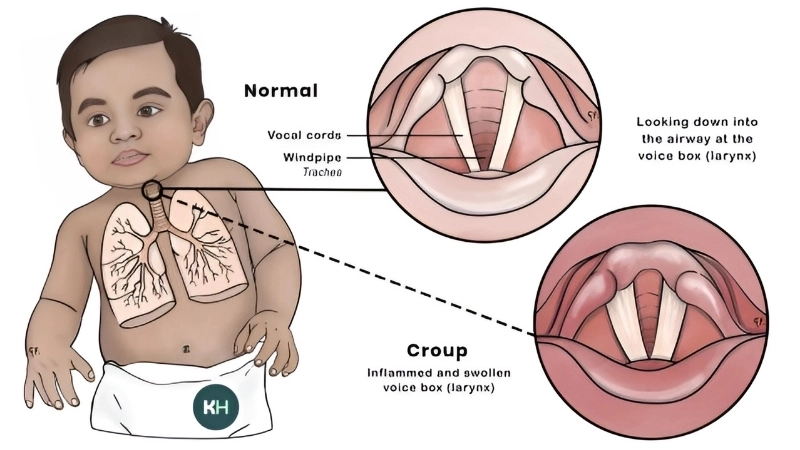Croup can be a worrying experience for parents, but understanding this common childhood illness is the first step to managing it effectively. Don't let uncertainty leave you unprepared; learn how to identify, prevent, and respond to croup for your child's well-being.
What are the main causes of Croup?
- Croup is predominantly caused by viral infections, most commonly the parainfluenza virus, leading to swelling in the vocal cords and windpipe.
- Respiratory syncytial virus (RSV), influenza, and adenovirus are other common viral culprits that can also trigger croup symptoms.
- Less frequently, bacterial infections can cause a more severe form of croup, though this is much rarer than viral cases.

Key symptoms of Croup to watch for
- A distinctive, harsh, barking cough, often compared to the sound of a seal, is the hallmark symptom of croup.
- Stridor, a high-pitched, noisy breathing sound, particularly noticeable when inhaling, indicates airway narrowing and requires attention.
- Hoarseness or a change in your child's voice often accompanies the cough, due to inflammation of the vocal cords.
How can you prevent Croup effectively?
- Practicing good hand hygiene, such as frequent handwashing, significantly reduces the spread of viruses that cause croup.
- Avoiding close contact with individuals who are sick can help protect your child from contracting respiratory infections.
- Ensuring your child receives recommended vaccinations, particularly the flu shot, offers protection against some viral causes of croup.
>>> Read to understand more: Blastomycosis Symptoms: Are You at Risk From This Fungus?
Real pictures of Croup disease







>>> Don't miss: Chickenpox Relief: Your Ultimate Guide to Soothing the Itch
Understanding a group empowers you to act confidently if it affects your child. Stay informed, recognize the signs, and consult your pediatrician for personalized advice and support.
>>> Related articles: COVID-19 in 2025: What You Need to Know to Stay Safe




